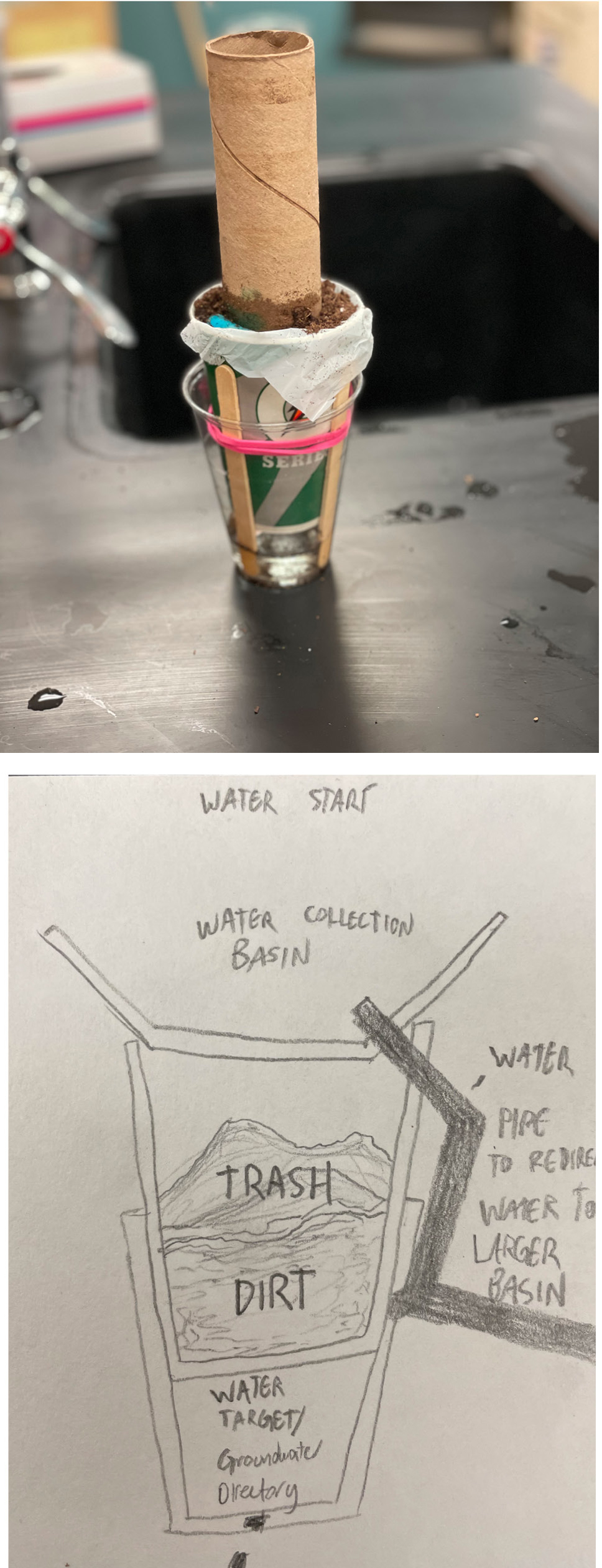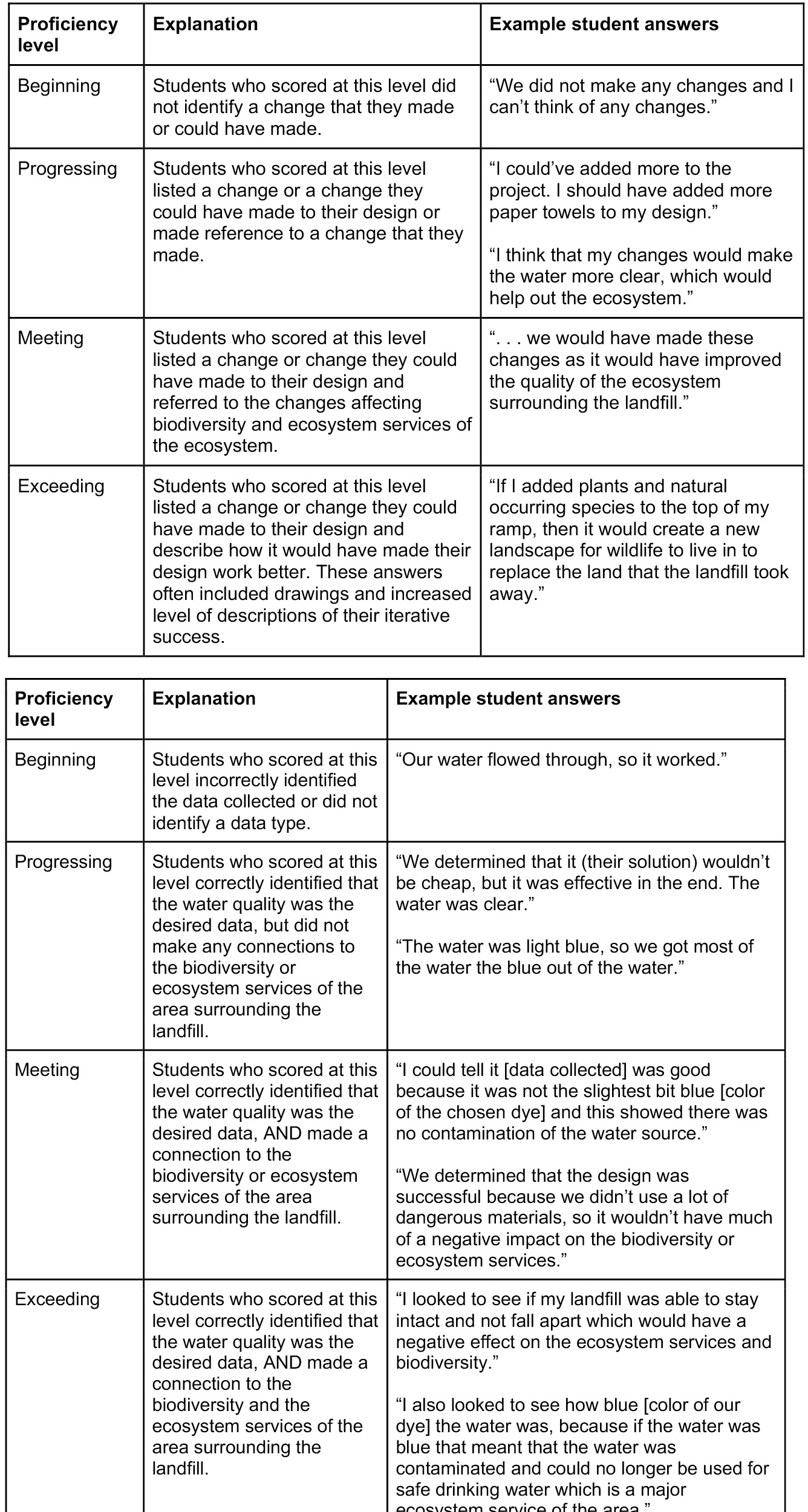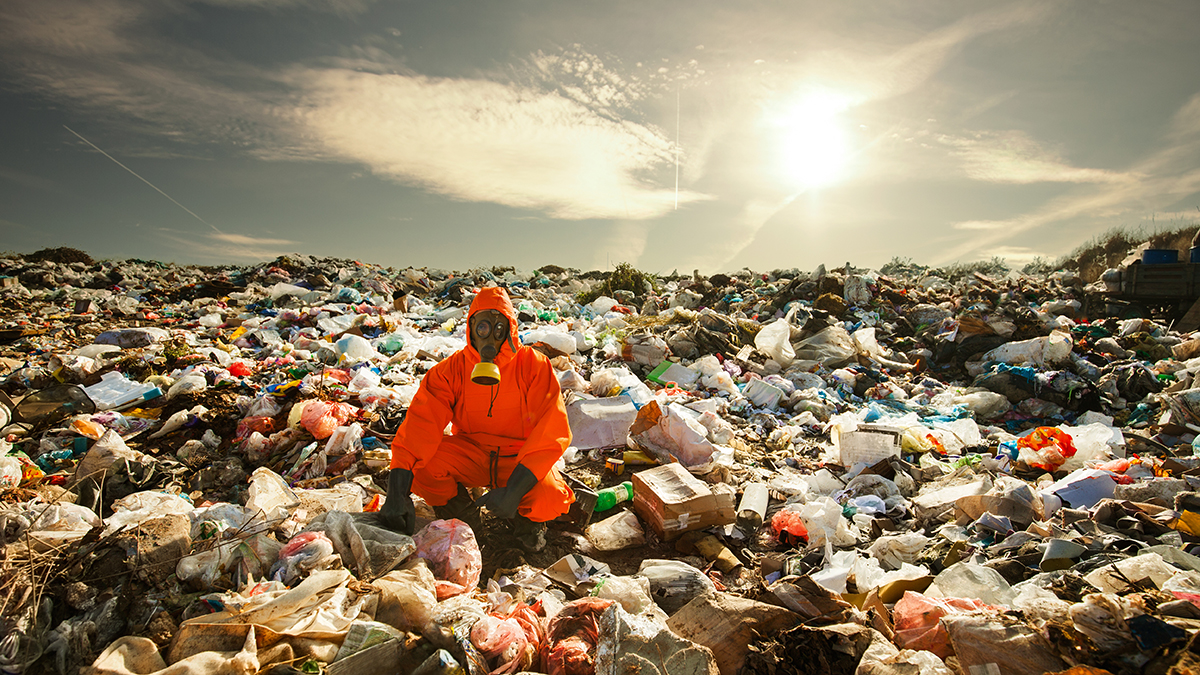feature
Playing With Garbage
Exploring the Nature of Technology and Engineering
CONTENT AREA Life Science and Engineering Design
GRADE LEVEL 8
BIG IDEA/UNIT Ecosystem services and biodiversity
ESSENTIAL PRE-EXISTING KNOWLEDGE The importance of biodiversity for clean water
TIME REQUIRED 120–150 minutes
COST Less than $10
SAFETY Avoid using real garbage, wash hands carefully, avoid spills
The Next Generation Science Standards (NGSS) explicitly link science and engineering. Therefore, we often use engineering tasks to engage students in our science class. In this article we focus on students developing a solution for problems that could be associated with garbage dump sites and the protection of ecosystem services and biodiversity (MS-LS 2-5 and MS-ETS-1-4).
Throughout the design challenge, teachers can promote broader scientific literacy by drawing students’ attention to the nature of engineering (NOE) and the nature of technology (NOT) (Holub, Kruse, and Menke 2020; Kruse and Wilcox 2017a). NOE explores what is engineering and what engineers do (Pleasants and Olson 2019). NOT explores what is technology and the ways technology interacts with users and society (Pleasants et al. 2019). Unfortunately, many misconceptions exist related to NOE and NOT (Kruse et al. 2017). For example, many people equate any design task as an engineering task rather than engineering as problem solving that requires the use of science and/or mathematical knowledge (Kruse and Wilcox 2017b). To combat such misconceptions and expand student thinking about NOE and NOT, we guide student thinking with carefully structured questions (Kruse et al. 2022; Voss et al. 2021) during small-group activities.
Motivating the problem
This project took place after a unit on ecosystem services and biodiversity in which students learned about the ways healthy ecosystems provide humans with clean water and clean air and the importance of biodiversity for the maintenance of healthy ecosystems. Within this context, we showed students a video with some images illustrating the tremendous amount of trash produced (van Lohuizen 2017). After the video we asked, “We know that a lot of this trash ends up in dump sites, how might that be affecting biodiversity and ecosystem services?” Students most often noted that the trash in the dumps is taking away habitat and may be producing leachate that finds its way into groundwater.
For this project we focused on the runoff and groundwater impact that garbage dump sites may have on the surrounding ecosystems. We asked students, “If we wanted to test ways to design a garbage dump without leaving the classroom, how could we do that?” Students often want to bring in garbage or dig a hole in the space behind the school. We encouraged the students to think smaller scale and connect to the work of engineers by asking, “Why do engineers often use small-scale tests before going to large scale?” Students quickly realize that large-scale testing requires more money and resources or may not be feasible in certain contexts. After this initial introduction, we turned our attention to creating a model.
Generating a model
To create the opportunity for students to address and attempt to solve the issue we identified, the class needed to create a model to develop and test their solutions. We asked the students, “How could we create a small model within our classroom?” and they discussed it with their partners. After students’ ideas were recorded, we asked the students to consider the following: “What does our classroom model need to include?” While we accept all answers, we were sure the list included soil, water, and trash. Then we asked, “How can we create a small-scale model at your desk to test possible solutions to the garbage problem?” Students were not given further criteria for this initial brainstorming session to encourage creativity.
Some classes generated potential desktop systems. For example, one class wanted to use a bowl with holes punched in the bottom. Another group of students suggested a glass system so that the model was transparent. Although we encouraged students to be creative, our limited resources meant that we needed to use the two-cup system in Figures 1 and 2. In this system, the bottom cup is clear so we can observe the runoff water, whereas the top cup contains soil and has small holes in the bottom. We asked students how we could use this system to model a garbage dump. Students recognized that one cup will represent the garbage dump, and inside of the top cup will be a small layer of dirt, followed by the trash and a second layer of dirt, and then finally a water source will be applied to the top of the dirt layer and allowed to seep through. The second cup then will be the receptacle for the “groundwater” to ease in the observation of the pollution level of the groundwater (see Figures 1 and 2).

(Upper) Student-created model to prevent garbage from leaking into groundwater during a rain event. (Lower) Student drawing to plan their model design.
The two-cup model was easy to construct, but students struggled with what to use as waste/garbage. Although students sometimes want to use actual garbage, we note that such an approach would not be sanitary so we must come up with something different. Some student ideas for modeling garbage included plastic, paper scraps, and something with dye such as a cotton ball with food coloring added.
We used a blank (i.e., mitigation strategies added) two-cup model and demonstrated how each of those types of garbage interacts with the water and soil. Students noted that the garbage containing the dye-soaked cotton ball showed dye clearly visible in the water. We pushed students toward using dye by asking, “Why is it important that trash we use to test our model includes both solids and liquids?” Although the plastic bags and paper scraps come into contact with the water and had an effect on the water, it was difficult to see the effect in the model, whereas cotton balls with dye made clear that the water had been contaminated. One constraint was identified: Students’ models must prevent food coloring from leaking into the groundwater during a rain event. Additional constraints are further explored in the next section.
Safety tips
To promote safety, we use packaged, sterilized potting soil and have students wash their hands carefully after working with the soil. We do not let students use actual garbage or food scraps because it can harbor bacteria and mold. Students should be wearing safety glasses throughout the activity.
Brainstorming and setting parameters (10–15 minutes)
With our two-cup modeling system established, students were ready to go ahead and begin to plan their ideas. We prompted students, in groups of two, to brainstorm as many solutions as possible and draw them on a notecard. We used groups of two to encourage collaboration while also encouraging more engagement in the task from each group member.
Before the drawing activity, we had a class-wide discussion about how a drawing can be considered a model and how students could go about making their (hand-drawn) models better. Students were given time to add labels, descriptions of how their model will prevent the dye from getting into the water, and colors to their drawing.
During their initial brainstorming, students wanted to know what additional constraints the task included. To respond to this, we asked students what kind of constraints an engineer may normally have to deal with in response to a real-life situation. Three major constraints developed in the conversation: materials, time, and cost. Materials was a hot topic for discussion, and the restriction applied by the “government” (teacher) was that all materials had to come from the shared supply bin (cardboard, straws, plastic bags, cotton, activated charcoal, rubber bands, etc.). Additionally, to more accurately simulate a real landfill, student models were required to include a layer of soil below and above the dye-soaked cotton ball, and students would only have 30 to 35 minutes to create their model.
Constructing and designing solutions (30–35 minutes)
After students created a drawing of their initial design, they began their building process. Students were provided one of each type of cup (paper and plastic) after they showed the teacher their detailed drawings (when we first did this activity, students hoarded materials; we now require students to identify a purpose and amount for each material before they are allowed to retrieve the material).
Much of this project entails student work time in pairs. We also use this time to engage students in small-group discussions. That is, we approach individual pairs of students to discuss their progress and ask students questions to push and guide their thinking about NOE and NOT (see Table 1). For example, after we noticed students began to make changes to their designs, we asked, “Why do engineers make changes or new iterations of their designs?”
These small-group conversations also allow us to help groups manage their time. Groups that were a bit behind were guided with questions such as, “Given our deadline is coming up, what aspects of your design are most crucial to demonstrate?” Groups that were speeding through the design were asked to defend their designs regarding sustainability and the materials they chose to use.
It is important to note that we still have to manage the whole class while working with each small group. Therefore, we are sure to position ourselves at student tables so that we can continue to see most of the class in our peripheral vision and avoid turning out backs to large portions of the room. We also are sure to vary the order in which we interact with groups to ensure we are moving around the whole room consistently. Continuing to walk around the room and interact with students as they worked helped us manage the class and safety, as well as create opportunities for us to help students test their ideas.
Testing the effectiveness of the designs (35–40 minutes)
During Day 3, students finished and tested their designs. We began Day 3 by demonstrating how we would be officially testing their models. We showed students a model with no mitigation strategies and used a small toy watering can to gently sprinkle water over the model until water began to drip into the lower cup. During this demonstration, the groundwater was very colored by the food coloring dye. We were careful not to spill the water and reminded students they should never drink things in science class.
Although students were allowed to use the sinks as a water source for mock testing, when it came time for their official test students used a watering can as a water source to best mimic rain. Before the “rain” began to fall, we ensured that students’ designs met the criteria of the model (e.g., layer of dirt above and below the trash) and had food coloring–soaked cotton balls representing “fresh” trash inside their model.
For students whose model was successful in creating clear, uncontaminated runoff water, we asked students to consider sustainability of their design. For models that were not as successful (i.e., they leaked dye into the water), we asked questions to encourage students to consider a redesign, for example, “Why is it essential for engineers to work through multiple versions (iterations) of their designs before producing a final product?” We ensured each group tested at least once as they would need their observations for the assessment.
We wrapped up this time with a brief note about the actual landfill design. We explained to students that modern landfills have liners to prevent refuse from entering groundwater. We also noted that these liners are consistently monitored.
Assessing student learning
Using a standards-based grading approach (Wilcox and Townsley 2022), we assessed students using the following series of questions about the impact of their design and iterations on the ecosystem:
Using students’ responses to these open-ended questions, we determined if each student exceeded, met, was progressing toward, or was still beginning to meet the standards. We used the explanation and exemplars in Figures 3 and 4 to determine to which level each student was aligned. Most students met the standards. When students were still progressing, they were most often lacking a clear connection to the science concepts of biodiversity and ecosystem services. Thus, revisiting these concepts in a follow-up, class-wide discussion about the design task was useful.
| Table 1. Nature of engineering and technology questions. | ||||||||||||||||||||||
|---|---|---|---|---|---|---|---|---|---|---|---|---|---|---|---|---|---|---|---|---|---|---|
|
||||||||||||||||||||||

(Upper) Rubric used for MS-ETS-1-4. (Lower) Rubric used for MS-LS-2-5.
Conclusion
Oftentimes, small-group instruction is overlooked as a powerful teaching tool. Yet during small-group conversations, we were able to provide in-the-moment support for students. Furthermore, discussing inherently abstract and difficult concepts concerning NOT and NOE (see Table 1) during small-group time helps us better gauge and guide student thinking. By posing these questions during small-group work time, we are able to guide students individually and encourage all students to become critically aware of engineering and technology.
Jonathan Cade Gilbert (cadeabc@gmail.com) is a graduate student in science education at Drake University in Des Moines, Iowa, and an eighth-grade teacher at Northview Middle School in Ankeny, Iowa. Jerrid W. Kruse (jerridkruse@gmail.com) is the Baker Professor of Education at Drake University in Des Moines, Iowa.
Biology Engineering Life Science Teaching Strategies Technology Middle School



